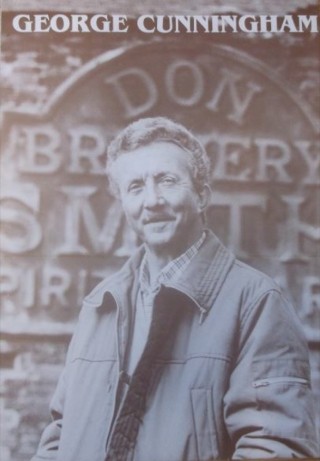George Cunningham: Working Life ~ Part 1
Cooper Brothers Ltd
Researched and written by Gemma Clarke
George’s first job was in a stamp shop at Cooper Brothers which was in Arundel Street. In the More George Book there are more detailed stories of some of the characters that worked there as well as the work that George himself did in Chapters 8, 9 and 10.
A New Beginning
‘Later that evening, Dad came home earlier than usual from Kenny McLeod’s and told me that a Mr Joel, foreman of the stamp shop at Cooper Brothers in Arundel Street, was looking for a handy lad and I was to go and see him in the morning.’
George’s First Job
‘However, Mr Little, after perusing the last school report I had brought with me, looked thoughtfully at my skinny frame and said, not unkindly, ‘Well, I don’t think that a job in the press shop would suit you, or be of any benefit to the firm.’ At first I was rather upset, but at the same time glad because, to be honest, I had been frightened by the machinery and noise down below. ‘However,’ he continued, folding up my report and handing it back to me, ‘Mr Beardsall, our designer, has been enquiring about having someone to assist him, so you start on Monday morning.’ I wasn’t given the opportunity to accept or decline, as he carried on. ‘You’ll start work at eight o’clock, three-quarters of an hour for dinner and finish at six, Saturday finish at one o’clock.’ ‘One week’s paid holiday a year. Your wages will be nine shillings for a forty-eight-hour week, with a rise of a shilling a week each birthday until you are twenty-one, at which time the situation will be reviewed.’ I mumbled out my thanks as he bustled me to the door, down the stairs and into Arundel Street. All the way home, I exulted in the delights of this vast sum of money being paid to me every week and of my transition in a few days from a callow school lad to a long-trousered, wage-earning workman.’
PP. 41-42, Chapter 8, More George! (courtesy of The Hallamshire Press Limited).
An Opportunity
‘I learnt the art of soldering and hammering, starting off by making napkin rings in sterling silver. I was also entered by the firm into the silversmithing class at the School of Art in Arundel Street. Mr Bennett, the teacher, was a tall, thin, slightly stooped man, who wore an artist’s smock and came from London, so that at first he was rather difficult to understand. The workshops at the College were high-ceilinged and airy, and much better equipped from those at Cooper Brothers. I made a child’s bowl and drinking mug by hand out of copper and engraved them with pictures of animals and birds, each one named, so that the infant could be taught to read whilst eating.’
P. 47, Chapter 10, More George! (courtesy of The Hallamshire Press Limited).
How did the War impact George’s workplace?
‘All that did happen was that Mr Beardsall designed, on the instructions of Mr Joe Cooper, a tea and sugar container. This contribution to the war effort was a small round tube about four inches long, divided in the middle by a partition and capped at each end. Made of sterling silver, beautifully engine-turned, with a shield left bare for the owner’s monogram, it was a must for wealthy people to take their own tea and sugar rations when visiting friends. It was in sharp contrast to the newspaper-clad mashings I was still doing for the silversmiths, and as I hammered and soldered these silver war winners, I wondered what Hitler would think about our secret weapons.’
Cooper Brothers
‘Things were getting crucial, too, at Cooper Brothers. The supply of sterling silver had dried up and I had to resort to making the tea and sugar containers out of an inferior metal, known in the trade as German Silver, which struck me as being rather ironic in the light of the current situation. I continued with my classes at the School of Art and did a drawing of a plate to complete the child’s set. When it was done to Mr Bennett’s satisfaction, a circle of copper was procured and I hand-hammered it into shape. Even though I was only sixteen, I was quite adept with the blowlamp and the dozens of hammers and various tool of the silversmithing craft. There was something very satisfying in hammering a flat sheet of metal and hopefully seeing it turn into a thing of beauty and a joy forever.’
PP. 61-63, Chapter 13, More George! (courtesy of The Hallamshire Press Limited).










No Comments
Add a comment about this page